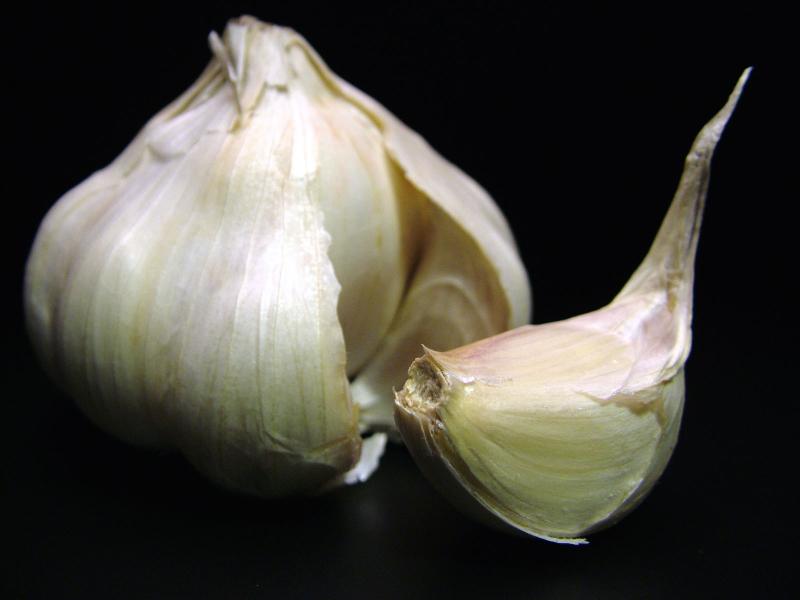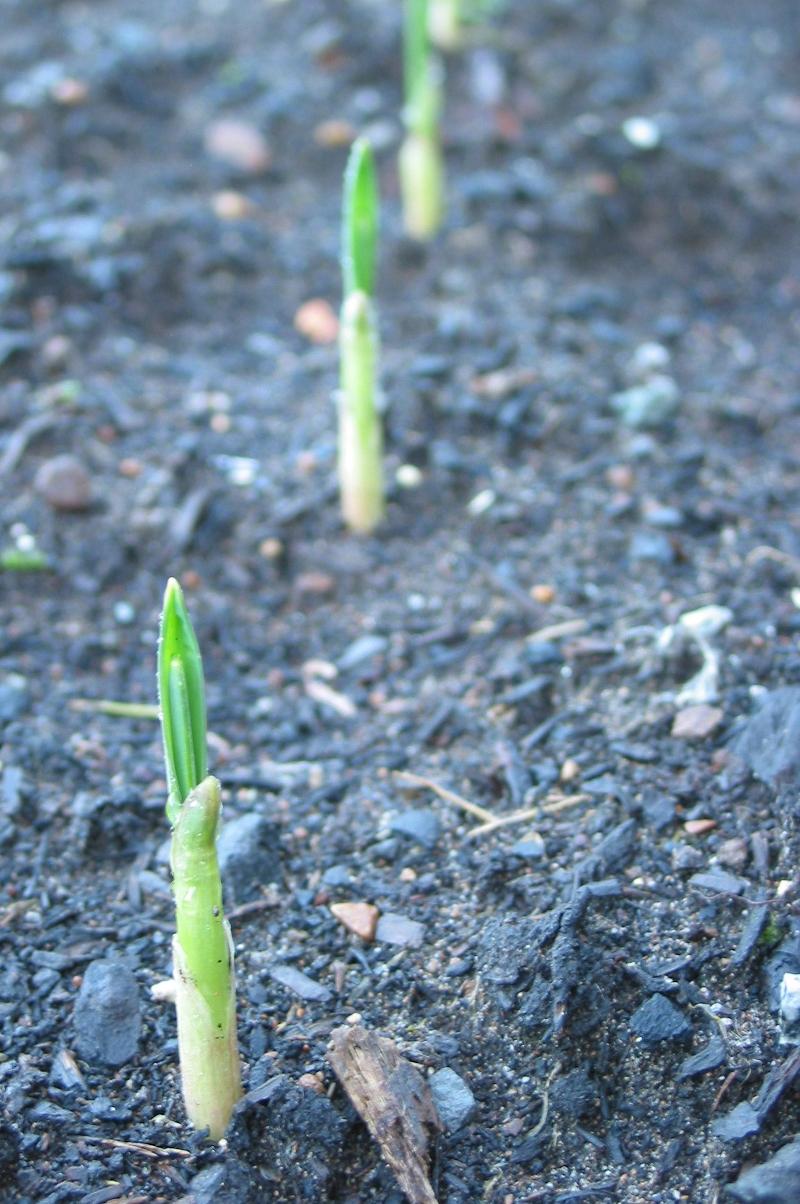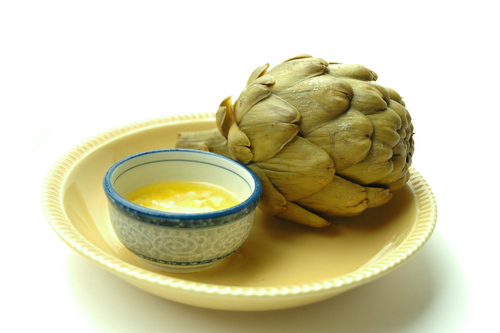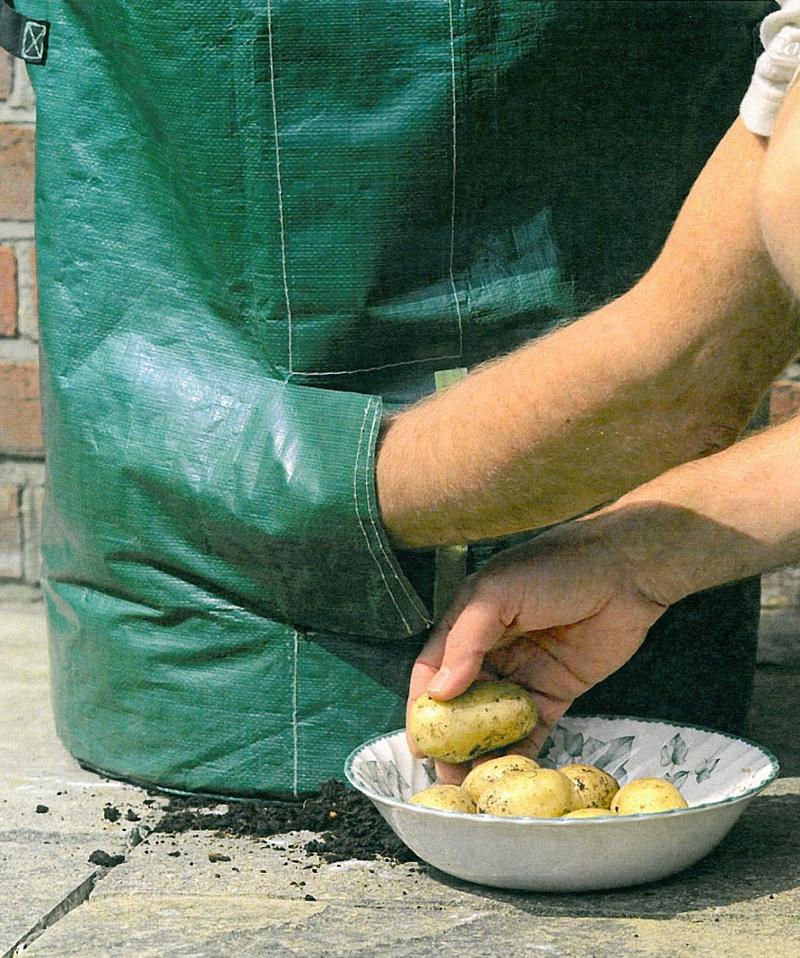|
|
|
 | Gift cards available now
at all Sloat Garden Center
Locations |  |  |  |
 |

"It is not really an exaggeration to say that peace
and happiness begin, geographically, where garlic
is used in cooking." - X. Marcel Boulestin (1878-1943)
Garlic is one of those foodstuffs with myriad uses: it's food, flavoring and medicine (garlic has been called an antiseptic and an antibacterial with anti-fungal properties). Americans eat about 3 pounds per person per year, and far east cultures eat over 50lbs. Garlic is delicious in just about every type of cuisine and, of course, it's perfect for warding off vampires.
Garlic is closely related to leeks, shallots and onions. When planted, individual cloves act as seeds. The bulbs grow underground and the leaves shoot up through the soil.
The best part about growing garlic is that it reveals the magic of gardening. Just a few cloves, soil, a container or open row, and months later, voila -- garlic in the kitchen! This spring we're carrying silver rose garlic, Italian purple garlic and elephant garlic. We invite you to garden with us and learn to grow and cook with garlic. Bon Appetit!
|
|
Separate the cloves (a process known as "cracking"). Plant the  cloves 2 inches deep, point side up, in a bed prepared with soil conditioner, or E.B. Stone Planting Compost. Add E.B. Stone Sure Start just before planting. Space your rows about 6 inches apart, and the cloves 4" to 6" apart. After planting, cover with a mulch like straw, about 6" inches above the ground. Water in. Garlic does not like to dry out during the growing season, so water regularly. cloves 2 inches deep, point side up, in a bed prepared with soil conditioner, or E.B. Stone Planting Compost. Add E.B. Stone Sure Start just before planting. Space your rows about 6 inches apart, and the cloves 4" to 6" apart. After planting, cover with a mulch like straw, about 6" inches above the ground. Water in. Garlic does not like to dry out during the growing season, so water regularly.
During the month of July, carefully scrape away some of the dirt around the top of one of the bulbs. If you can feel the bumps of the cloves through the wrappers of the bulb, your garlic has matured, it's time to stop watering for two weeks. The tops will wilt. After that time, carefully lift the bulbs out of the ground using a shovel or garden fork. Do not wash them; allow them to air dry in a partially shaded spot.
Harvested garlic can be stored in a cool, dry place for a few months
Tips: Don't plant garlic in the same bed you used the year before. Allow two years to pass before using that same bed for garlic again. This will cut down on insects and disease that might build up if the beds are planted with the same crop each year. Also, you can grow and eat the garlic tops -- known as scapes -- which can be sauteed like scallions.)
Trey Pitsenberger of Golden Gecko Garden Center shares his garlic knowledge in this issue of the Kitchen Gardener. Every so often we like to reach out to a different independent garden center to support the spread of gardening knowledge.
|
What a deal! Plant up artichokes along with garlic
Offer valid through February 26th
|
Steamed artichoke leaves with garlic lemon butter
2 artichokes
Fresh lemon juice
1 small garlic clove, finely minced
6 Tbs butter
Salt to taste
Wash artichokes under running water. Pull off lower petals that are small or discolored. Cut stems close to base. Cut the tips off the top of the artichoke. Boil water in a large saucepan and add a steamer basket. Place artichokes in the steamer basket and steam for 30 to 45 minutes. Pull off a leaf to test for done-ness. Leaf should pull out easily and fleshy ends will be soft to eat.
In a small saucepan, warm lemon juice and butter and garlic. Add salt to taste.
How to eat an artichoke: Artichoke leaves can be picked off one by one and dipped in the garlic lemon butter. Drag your teeth over the very tip of the leaf to remove the soft pulp of the artichoke.
When you reach the center of the artichoke, remove the inedible purple-toned inner leaves and scape away the choke, which looks like fuzzy fibers. You will find the heart. Cut the artichoke heart into pieces and enjoy with the garlic lemon butter.
*** The smell of garlic can be removed by running your hands under cold water while rubbing a stainless steel object.
|
Potato Bags 
Want homegrown potatoes? Gardman Potato Bags are the easy gardening answer.
This tough, heavy duty polyethylene tub will help you grow potatoes all spring and summer. We like them because of their strong stitched seams and easy to use carry handles. They also feature drainage holes and 2 access flaps for harvesting potatoes. Gardman Potato Bags are now available at all Sloat Garden Center locations.
|
- Many of our locations will receive new hybrid fruit trees next week. Peacotum is a sweet hybrid of peach, apricot and plum. All Sloat locations will have them, except two San Francisco stores (Third Avenue and Pierce St.).
- Make a note to check out our Facebook page on February 29th for a fun Leap Day deal, available only on our Facebook page.
- Did you know that twice each month we publish the latest Sloat Garden Center Hot Deals enewsletter that features special offers and HUGE savings?? Sign up to receive this and other fabulous enewsletters here.
|
 | |
Sloat Recipe Box
Need more recipe ideas? Check out our recipes from the garden.
Have a garden recipe to share?
Send it to sloat@sloatgardens.com. If we pick your recipe we'll mail you a $25 Sloat Garden Center gift card! (Note: Recipes need to include vegetables, fruit or herbs you can grow).
|
|
|
| Please join us on Facebook or Twitter and stay up-to-date on our latest specials, fresh arrivals and gardening tips. You can also visit our blog here. |  |  |
|
|
|
|
|
|
|